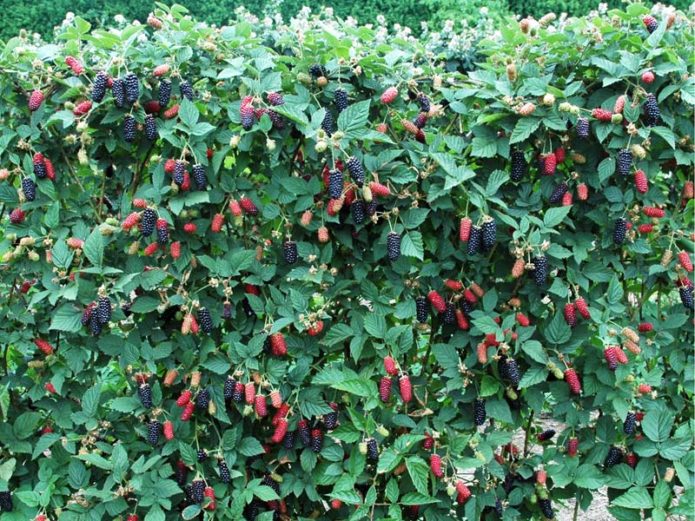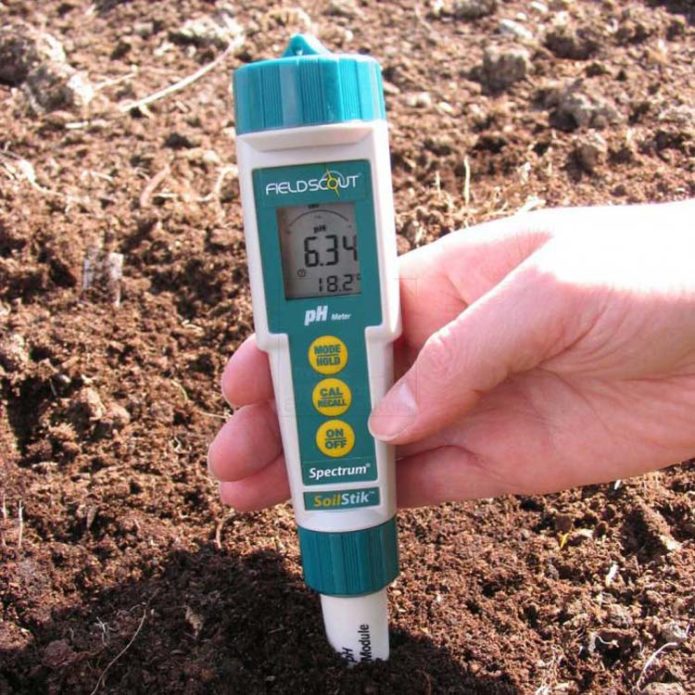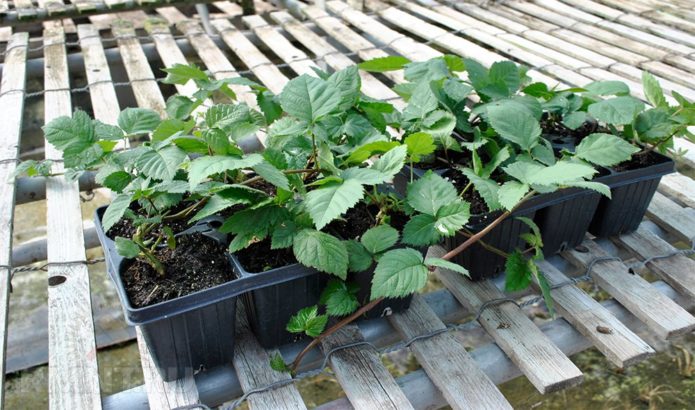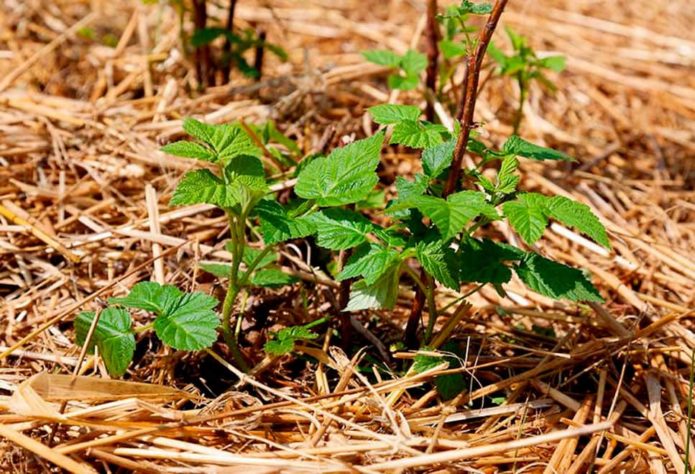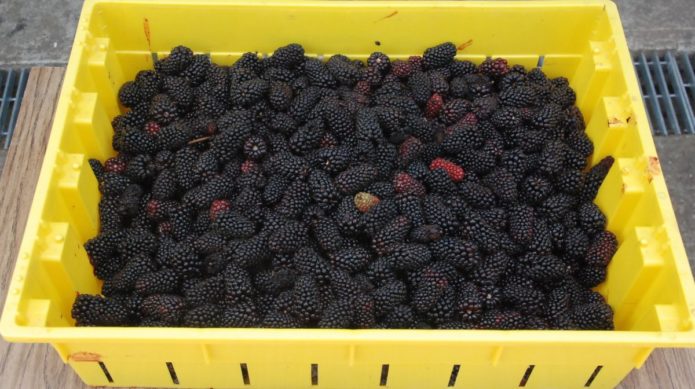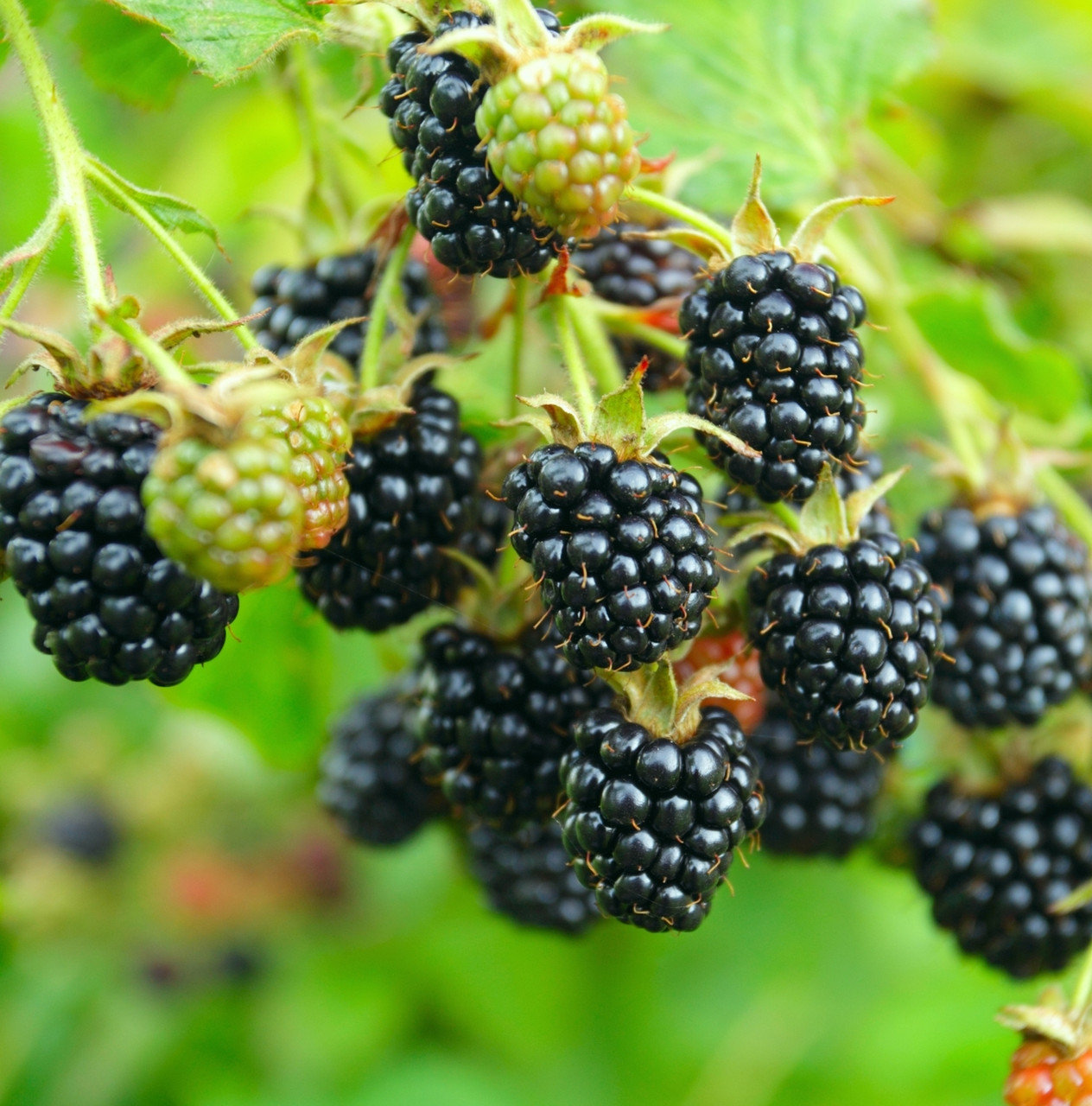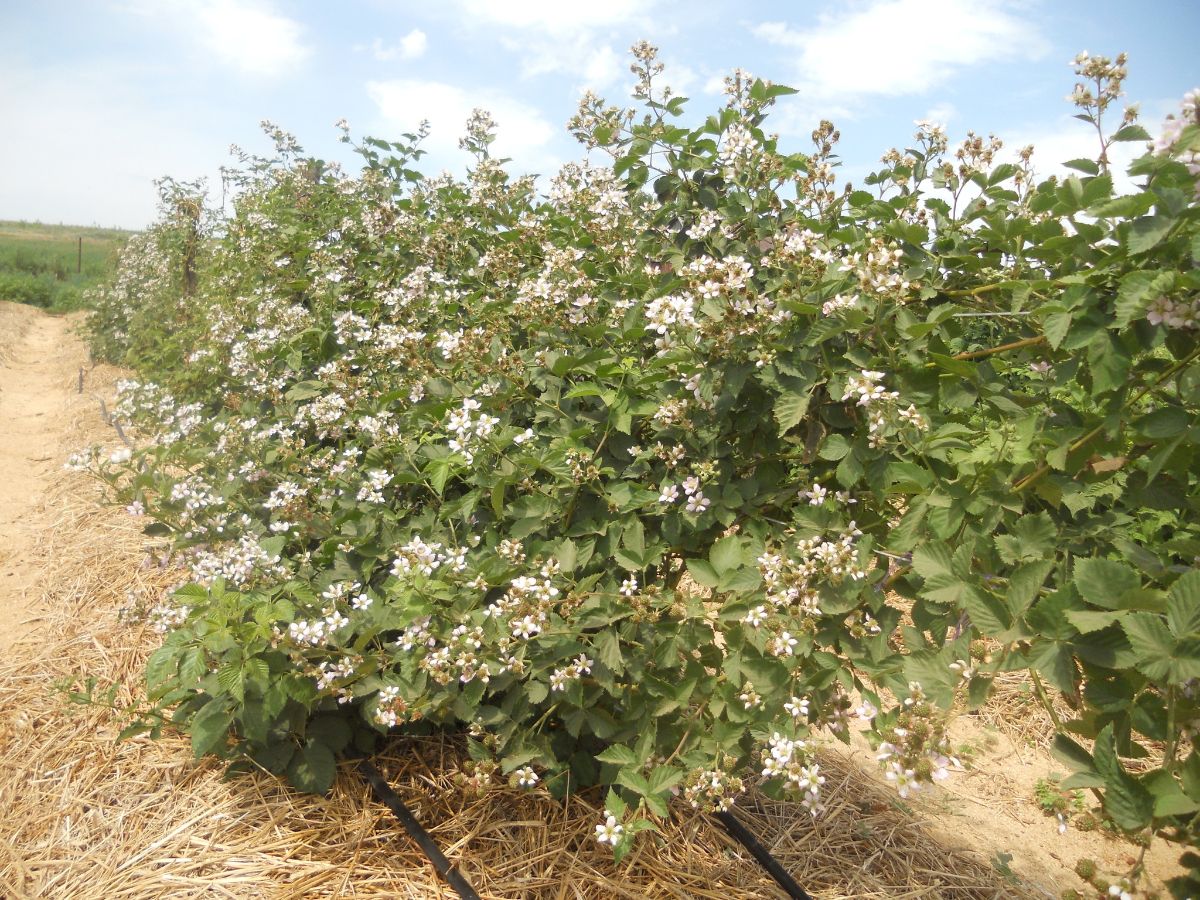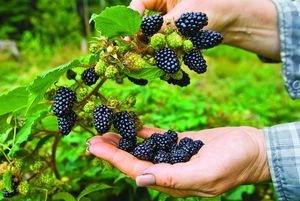Blackberries have always been considered a forest berry, but in recent years they have been increasingly planted on private plots by amateur gardeners and even farmers who grow berries for sale. There are no domestic large-fruited varieties yet, but a number of foreign developments are quite suitable for growing in our climate. One of the popular varieties with very large berries is Karaka Black.
Content
General characteristics of the blackberry variety Karaka Black
Blackberry Karaka Black is well known to those gardeners who have already decided to try this crop on their plots. It is suitable for growing in many regions, except for very cold ones.
Growing history
Many varieties of blackberries cultivated in our country come from Poland and North America. Karaka Black is an even more distant visitor, she is from the southern hemisphere. Work on the variety began almost 40 years ago in New Zealand. Its "parents" were the Comanche variety from Arkansas and the Aurora hybrid of Oregon selection. The work went on for a long and difficult time, and a new variety was registered only in 2003.
In Russia and neighboring states, the Karaka Black blackberry appeared quite recently, but in Western Europe it is widespread, and in countries with a relatively cold climate, it is also grown indoors. The variety gained the greatest popularity in England.
Thornless blackberry. Its shoots are devoid of thorns, and the berries are impressive in size and have a sweet pleasant taste:https://flowers.bigbadmole.com/en/yagody/sorta-ezheviki-besshipnoy.html
Plant characteristic
Blackberry Karaka Black is one of the creeping varieties (dew). Shoots are characterized by medium thickness, moderately long (3-5 m), flexible. Scourges with short internodes and thorns do not break when trying to bend and move to the desired place. No pinching is required. The thorns are small and, in comparison with many varieties, not very tough, but it is impossible to work with the plant without gloves. Under normal agricultural practices, the variety forms little overgrowth. Young leaves can be yellow, but later they turn to the usual green color for blackberries.
The variety is considered to be disease resistant, but preventive treatments are highly desirable. Poorly tolerates drought, dies when the temperature drops to -15 aboutFROM.
The variety bears fruit on last year's growth; full harvests are harvested from bushes 3 years old and older. Fruit twigs are produced in large numbers, each carrying 3 to 6 berries. Blackberries bloom in the first half of May, in the northern part of the country a little later. Both flowering and fruiting are wavy in nature: from the upper buds to the lower ones. At the same time, both flowers (on the lower tiers) and fully ripe berries can be on the branches at the same time.
Good or bad stretching of fruiting, everyone decides for himself. So, in amateur gardening, this is more likely a dignity of the variety, because such a feature prolongs the fruiting period and allows you to do with only this one variety.And for those who grow berries for sale, it is more convenient to harvest the entire crop at once, so the variety is not very good for industrial gardening.
The berries ripen early: in the south in the first half of June, in the middle lane in early July, the harvest continues up to two months. The overall yield is high: from an adult bush, you can pick up to 12 kg of berries, and sometimes more. In large farms in the homeland, up to 25 centners of berries are harvested per hectare.
Description of berries
The berries are large, beautiful, up to 5 cm long, fully ripe - black, shiny. Unripe fruits are purple in color, the onset of ripening is characterized by their staining red. The berries resemble mulberries in shape: they are long, narrowed towards the crown, and may even be curved. The mass of each berry is about 10 g. There are specimens up to 17 g, but only with good care and on adult bushes.
Unripe berries are sour but edible. As they ripen, they add sugar and, when technically ripe, have a sweet and sour taste and strong aroma. Tasting marks - from 4.1 to 4.5. Filmed at this stage, they are well transported over long distances, stored in a cool place for up to 5 days. Overripe berries lose their shine, they are sweet, without sourness, hardly stored and, moreover, are prone to shedding from the branches. Therefore, the harvest must be on time.
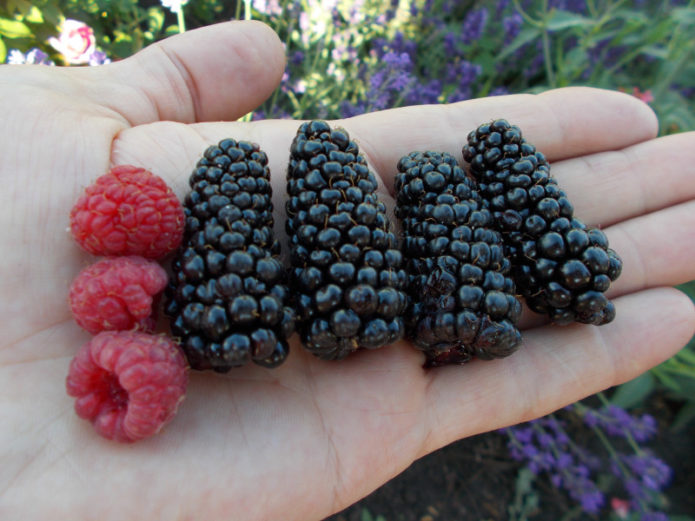
It's hard to compare the flavors of blackberries and raspberries, but the difference in berry size is impressive.
The purpose of berries is universal: they are eaten fresh, frozen, processed into jam, compote, and wine is made. Traditionally, in different localities, preference is given to various processing methods: after all, in the southern latitudes the berries grow sweeter, and where there is not enough sun, their taste is much worse.
Video: Blackberry Harvest Karaka Black
Planting and growing blackberries of the Karaka Black variety
The agricultural technology of the Karaka Black variety differs little from that for other varieties of creeping blackberries, but since this culture is still not widespread in our gardens, it is worth devoting a few lines to both proper planting and plant care.
Planting and transplanting blackberries. Rules, nuances, step-by-step instructions:https://flowers.bigbadmole.com/en/yagody/posadka-ezheviki-vesnoy.html
Landing
Blackberry Karaka Black is planted in spring, but not early: the ground should warm up a little (or at least completely thaw to a half-meter depth). In the southern regions, on the contrary, autumn planting is preferable: the early heat is dangerous for the seedlings that have not yet taken root. The site should be well lit by the sun and protected from cold winds. And here for the southern regions an exception is possible: sometimes you have to shade the planting from the scorching sun.
The ideal soil is slightly acidic, loamy, well fertilized. Planting blackberries is pointless without applying substantial doses of fertilizers. Minimum quantity per 1 m2 - a bucket of good humus, 120-150 g of superphosphate and about 50 g of potassium sulfate. These fertilizers are applied with continuous deep digging of the site, but it is important to create the necessary acidity of the soil. Blackberries are the case when it makes sense to determine the acidity and more precisely, using the simplest methods (devices or indicator strips).
Even soils neutral in acidity need to be slightly acidified by adding high-moor peat. Strongly acidic, as usual, lime. If the soil is clayey, sand is added to it. When digging, the rhizomes of perennial weeds are carefully removed, and only after that planting holes are dug. They should measure about half a meter in all dimensions. Despite the continuous application of fertilizers, a bucket of humus, a handful of superphosphate and a pinch of potash fertilizer are also added to the soil taken out of the pit. Having mixed well, the fertilized soil is returned to the pit, 1–2 buckets of water are poured out and allowed to settle for at least two weeks.
The minimum distance between the pits for planting Karaka Black blackberries is one and a half meters, but if the area allows, it is better to increase it to three. With a sweaty planting, caring for a blackberry is much more difficult: you need to organize drip irrigation and feed more often. It is better to make a trellis in advance with a height of at least one and a half meters. Rows of strong wire are pulled at heights of 90, 120 and 150 cm.
Planting is not difficult and is carried out similarly to any berry bushes, you just need to remember to comply with the mandatory conditions:
- soak the roots of the seedling in water for 10-12 hours (in the case of a seedling in a container, water it well before planting);
- deepen the root collar a little (only 1.5–2.0 cm);
- it is good to water the seedling and be sure to mulch it with humus or high-moor peat, you can use straw.
Care
When growing, all dewdrops must be tied up, otherwise the shoots will lie on the ground, and the berries will also be there and stained. For ease of care, fruit-bearing shoots are tied up with trellises on one side, young ones on the other. The garter is carried out systematically, as the shoots grow, using any soft ribbons or special plastic clips that are on sale.
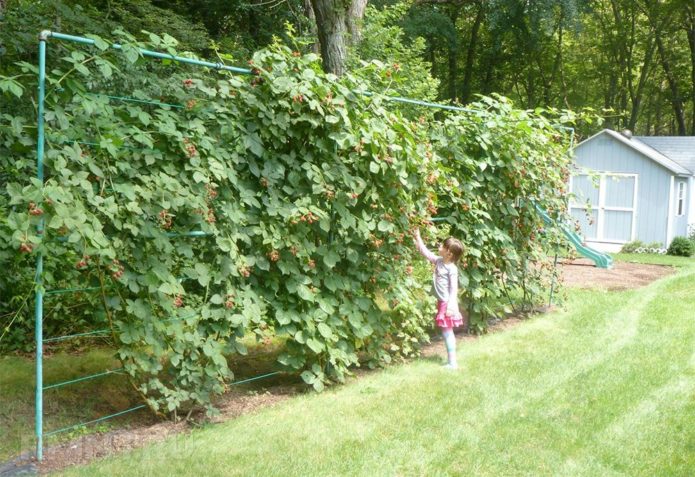
Some gardeners arrange trellises with a height of more than 2 meters, but it is inconvenient to pick berries from it.
Like all blackberry varieties, Karaka Black requires systematic watering. High soil moisture is especially important during flowering and berry growth. Loosening of the soil is encouraged only in spring and autumn (after collecting the last berries), during the rest of the year it is kept under a layer of mulch of at least 5 cm, which is used as high-moor peat, humus or chopped straw.
Periodically renewed mulch is also sufficient as an organic fertilizer, if at least 10 kg is per bush annually: after all, during the loosening of the soil, it is shallowly buried. Mineral fertilizers are applied starting from the 3rd year after planting, using the scheme: in spring 15 g / m2 urea, in autumn 100 g / m2 superphosphate and 30 g / m2 potassium sulfate.
Blackberry Karaka Black should not receive chlorine-containing fertilizers!
Correct pruning blackberries... In the fall, remove all the two-year-old shoots that have borne fruit, cutting them as close to the base as possible. You should not use them as mulch: it is better to burn them right away. This can be done immediately after the last harvest.
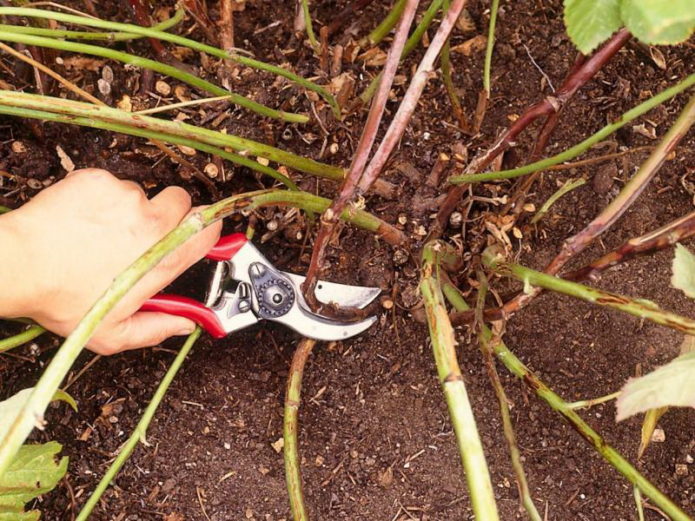
It is better not to keep the fruit-bearing (dark) shoots for a long time, so that they do not waste soil nutrition
As for new shoots, they must be well examined and decided, which really must be left. Weak and damaged are cut out. The lashes left are shortened to a length of about 2 meters. No more than 8 of them are left in each bush (although, if they do not interfere with the shelter of the bush for the winter, it is better to leave more, and transfer the rationing of the quantity to the spring, because in winter some of them may freeze). It is important to carefully walk over each young shoot and slightly (2-3 cm) shorten all lateral branches.
The shoots of the Karaka Black blackberry, fortunately, are easy to cover for the winter, since they can be bent almost anything, they will not break... True, during this operation, thick gloves must be worn, since the thorns will prevent the shoots from laying on the ground. The branches are pinned to the ground with any wire brackets or simply pressed down with heavy objects, and then covered with coniferous spruce branches or corn stalks. You can use spunbond with a high areal density, and in the coldest regions, blackberries are even covered with dry soil for the winter.
It is important to open the plants in time in spring, since damping is no less dangerous than freezing.
Blackberry Karaka Black rarely gets sick, but if you miss the garter of shoots, then outbreaks of fungal diseases are possible from their location on wet soil.Most often, the plant can pick up anthracnose or gray rot. The risk increases when there are strawberry, raspberry or tomato plantings nearby. These diseases are treated with fungicides, but since Karaka Black is distinguished by long-term fruiting, there is no time to spray it in the summer! Therefore, it is important to prevent outbreaks of the disease, for which, in addition to observing the rules of cultivation, prophylactic spraying of the shrub with 1% Bordeaux liquid is carried out. Do this three times per season: before flowering, when young shoots grow 25-30 cm and immediately after harvest.
Caring for blackberries in the fall in preparation for winter:https://flowers.bigbadmole.com/en/uhod-za-rasteniyami/ezhevika-uhod-osenyu-podgotovka-k-zime.html
Advantages and disadvantages of the variety in comparison with similar
Blackberries Karaka Black are not frost-resistant, which should be borne in mind immediately if you want to plant them: the temperature is below -15 aboutC kills both shoots and flower buds. Therefore, a thorough shelter for the winter is required even in the southern regions. Otherwise, it is an unproblematic variety with its own advantages and disadvantages.
The most important advantages of the variety are:
- large-fruited, excellent presentation of berries;
- good taste;
- early ripening of berries and prolonged fruiting;
- high productivity;
- good transportability;
- the ability of shoots to bend easily;
- small amount of overgrowth;
- high disease resistance.
The disadvantages of the variety are:
- low frost resistance and poor drought resistance;
- an abundance of thorns;
- shedding of overripe berries.
It is difficult to call an unpretentious variety of Karaka Black, but it does not present any particular difficulty for cultivation. Basically in our country, it is suitable for personal farms, including small farms. So far, not so many blackberry varieties are grown in our country, and only three are registered in the State Register of the Russian Federation. The well-known Samara variety Tonfri is inferior in almost all respects, including the size of berries and taste. The same can be said about the Agavam variety. Agatovaya, a new variety of Crimean origin, was awarded a high tasting score (4.8 points). Its good drought resistance and good frost resistance are declared, but the size of the berries is half that of Karak Black.
All large-fruited varieties suitable for growing in relatively cold climates are of foreign origin. There are quite a few of them, there are also thornless plants, for example, the Columbia Star blackberry - the newest variety of American selection. In many respects, it is comparable to Karaka Black, but it has high heat resistance, and the absence of thorns is a clear plus.
A very good variety Polar can withstand frosts down to -30 ºС, does not have thorns, but its yield is twice as low, and it is difficult to cover bushes for the winter, since the shoots practically do not bend. Actually, as for other crops, you can always choose a blackberry variety that surpasses others in some parameters, but in some ways is inferior.
Video: Blackberry Karaka Black in the garden
Reviews
My Karaka grows on a trellis 1.4 m high. But I do not limit the length of the branch. Typically 4 meters is the standard branch length for this variety. I don't pinch the branches. I tried, but did not notice the difference in the yield. But the berry has become a little smaller and more green operations are needed. Therefore, I no longer toil with this agricultural practice.
We, too, Karak went a week, the first berry was picked on 10.06. There are many berries and they are really very large. The taste is excellent, intense sweet and sour. It reminds me of ripe Podbelskaya cherry, where sweetness prevails, but sourness makes the taste harmonious.
Several unsuccessful seasons decided the question not in favor of Karak Black. In my climate, it has a low yield. Too much vines are lost even in mild winters. It's a combination of factors. Too high energy of development of many branches at the end of the growing season and instability to fungal diseases. It's pointless to talk about the harvest - 10-15 berries from a bush. There is nothing to take.According to the results of winter (with the use of a multi-layer shelter), the vine is thrown away from year to year. Although I know that in Voronezh the bushes winter even without shelter.
Nobody calls to grow Karaka Black without shelter for the winter. With shelter - a wonderful variety with a magnificent berry.
The blackberry of the Karaka Black variety is not ideal, but for small farms it is a good choice. At least, extended fruiting, good taste of large berries and high yields make it possible to plant only one variety, the berries of which will be enough for personal consumption for two summer months.
